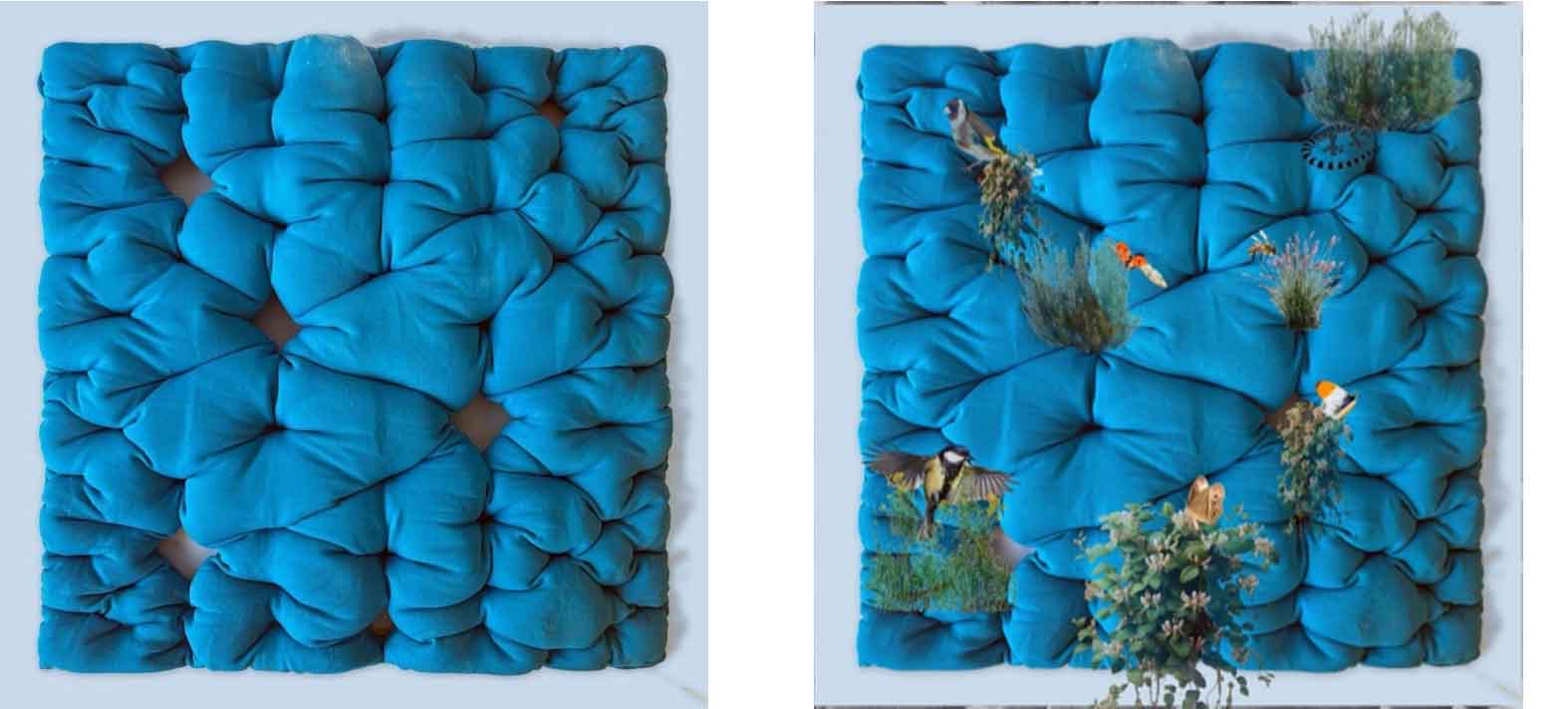
Developing a model for multispecies design of building envelopes
The main objective of the proposed research is to conceptualize and develop a model and a design to fabrication methodology for the design of eco-architectural building envelopes tile system for multispecies habitats. This overarching goal is segmented into several secondary objectives:
The first secondary aim is to develop a computational model that will facilitate the incorporation of non-human habitat needs (in terms of environmaental conditions, geometry and material) into a versatile building envelope tile systems for existing and new buildings. This system is designed to be adaptable, allowing modifications based on predefined species distribution, alongside their specific geometric and environmental requirements.
The second secondary aim is the formulation of a design oriented multicriteria distribution model tailored to generate distribution strategies of multispecies tiles building envelope. The third secondary aim is to validate the developed model and concepts in a pysical 1:1 case study experiment.
The main significance of this research lies in addressing the theoretical and design challenges of conceptualizing and implementing multispecies habitats on building envelopes. By creating new habitats for a diverse range of flora and fauna on building exteriors—areas typically regarded as "urban brownfields" for non-human life—this work contributes to combating the decline of species and enhancing biodiversity. It will also help establish a network of ecological urban nodes, linking existing gardens, parks, and green spaces, thereby fostering greater connectivity within urban ecosystems. Beyond its direct environmental contributions, the research is expected also to contribute to enhancing the collaboration between architects and ecologists in the building design scale. Success in increasing human exposure to nature will positively impact human well-being, which is known to be closely connected to exposure to nature (Grobman et al., 2023). This holistic approach promotes both ecological resilience and a healthier, more harmonious urban environment.



